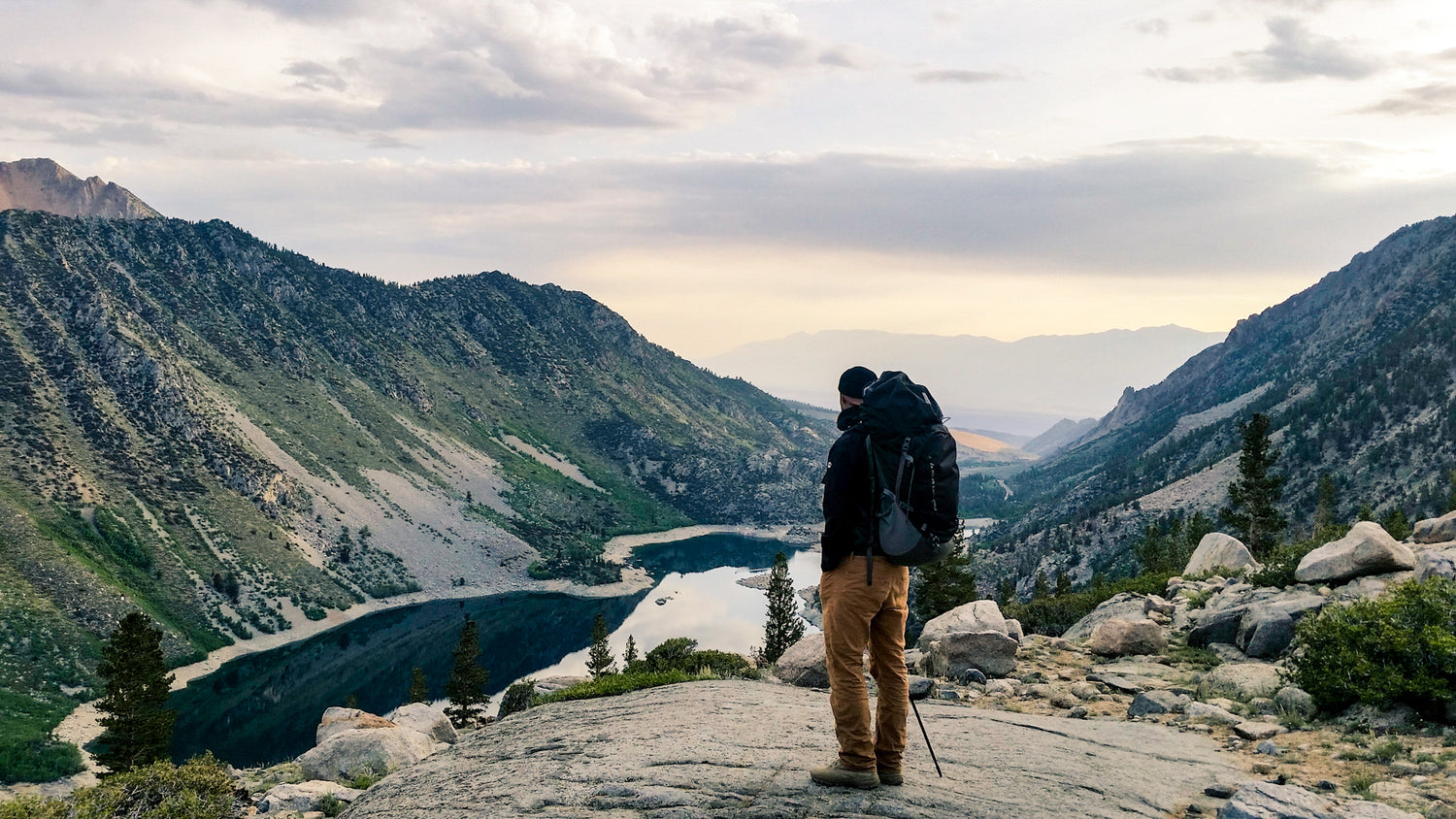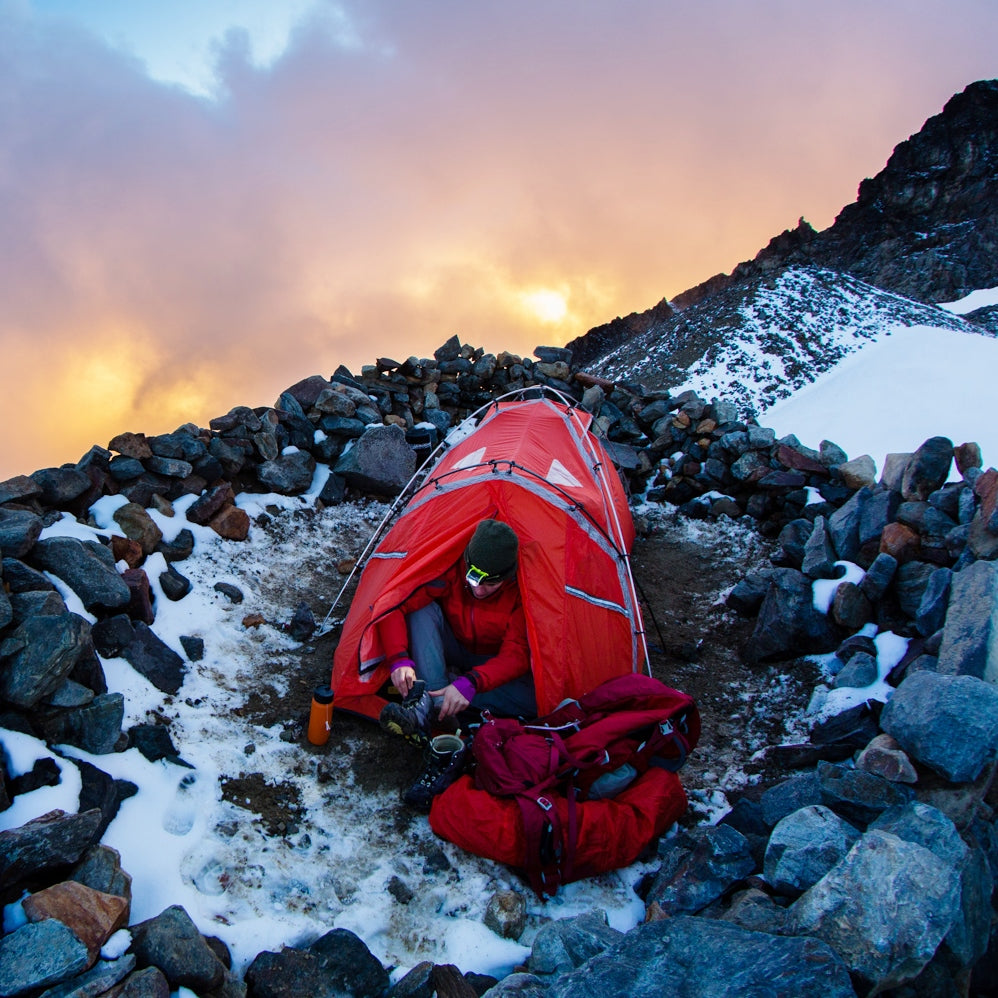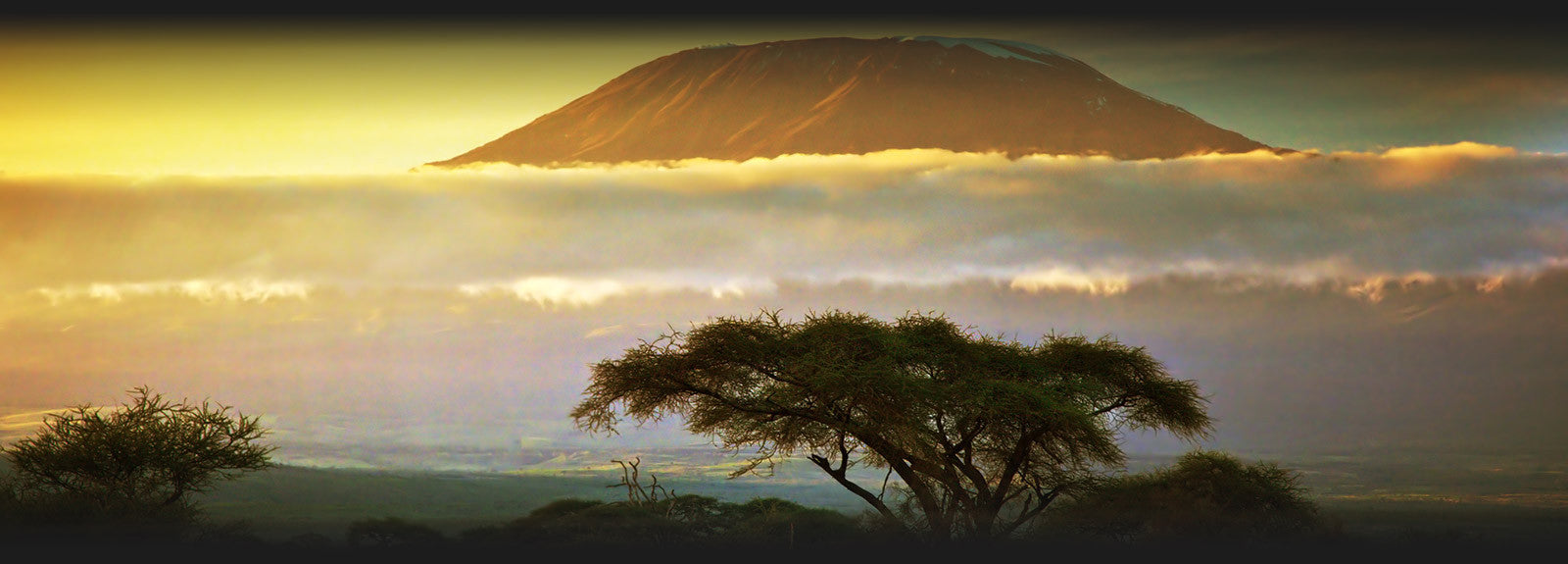Kilimanjaro Gear brand ambassador Connor has assembled a list of Top 10 items every aspiring backpacker should consider.
Read on for this experienced outdoorsman's take on must-have gear for hitting the trail:
If you're like many beginning backpackers, the sheer amount, complexity and cost range of backpacking gear can be overwhelming. I've lost count of how many times friends, family members and acquaintances have asked me for advice.
They want to know what gear is really needed to get into backpacking without mortgaging a house or carrying the equivalent of a kitchen, bedroom and pantry on their back.
So what do you actually "need" to start backpacking? Ask any seasoned backpacker and you'll get a different answer from every one of them.
So here's my suggestion:
Focus on what you need to be comfortable.

As a beginning backpacker, you might not need to be comfortable to survive, but it sure helps improve the experience.
This isn't a forced march you're planning, it's about getting out there and having fun. And if you're smiling at the end of your trip, you'll be planning your next one on the drive home.
The trick then, is to walk (hike?) the fine line between comfortable...and overloaded. A heavy pack overstuffed with gear you don't need is overkill, and decidedly uncomfortable to carry.
Here is my list of a few key essentials that no comfort-oriented backpacker leaves home without (unless you're going ultralight - but that's a topic for another day).
1. Backpack
Duh....really? Yes - a backpack is nice if you'd rather not carry everything in your arms. There's a lot of design and functionality that goes into a backpack and they vary widely in terms of size, fit, features and cost.
Some of the most well-known brands are Osprey, Black Diamond, North Face, Arc'teryx, Gregory, and the REI house brand. For a comparison of some of the best packs, cost and where to buy, click here.

I personally have been using the Black Diamond Mercury for the last 3 years and love it.
The pack has lots of pockets and compartments but my favorite feature is the fact that you can lay the pack down and open it like a suitcase to access anything you need. Some higher-priced packs don't offer this feature, and it's one I can't live without.
Another important consideration is backpack size. A 65-75 liter pack is very large but great for multi-day hikes and trips ranging from 3 to 7 days.
You can get away with a 50 to 60 liter pack for shorter trips. I highly recommend heading to REI to get fitted since not all packs fit an individual correctly.
And for smaller day packs, I'd be remiss if I didn't mention our very own Kilimanjaro packs. I'm partial to the Operator Modular pack in the Tan or Camo color. At 40 liters, it's just right for a day hike or warm weather overnighter.

2. Sleeping Bag
You're going to need to sleep at some point and unless you want to run the risk of freezing or rolling around all night uncomfortably, a good bag is a necessity.

For general 3-season backpacking (spring, summer, fall) you are going to want a moderately insulated sleeping bag rated for 20F to 40F degrees.
The degree rating (or 'EN rating') is usually based on a warm male sleeper. Women tend to sleep cooler than guys, so a good rule of thumb is to add 10F degrees to your bag's lower temperature limit.
For example, a 20F degree bag would provide adequate warmth for a man in 20F degree weather. A woman sleeping in the same conditions would need a 10F bag to feel as warm as her male campmate.
Sleeping bag fill material is generally either "down" or "synthetic". Down is more expensive and requires greater care but usually is warmer, higher quality, and packs down smaller (for fitting into your pack).
Synthetic bags are filled with materials meant to mimic goose or duck down. These bags are usually cheaper and more durable, but less compact and heavier.
I personally own the Kelty Ignite 20 degree down bag (now called Kelty Cosmic). This bag is great, light, relatively inexpensive and waterproofed. It's held up well for three years of heavy use, and I love it for general backpacking and cooler nights.
For more information on the best 3-season sleeping bags, click here.
3. Tent
Some hardcore types will disagree but for me, and for comfort, a tent is a must. I personally like sleeping in a tent compared to a hammock or cowboy style on the dirt.

Hammocks are lighter and more compact than tents, but won't protect you from a random rain shower at 2 AM or pesky no-see-um bugs.
Just like backpacks and sleeping bags, tents vary widely. For general three-season backpacking, a 1 or 2-person tent will work fine. I recommend a 2-person tent since it provides adequate room for yourself and gear when backpacking solo.
If you are going with another person, you both can share the tent and split the weight and bulk between your backpacks. I personally use the simple, yet hardy REI Passage 2. This tent has served me well, through rain, wind and sunshine. It's lightweight and setup is fast and simple. It has room for 2 people with room to spare for gear.
For more tent comparisons click here.
4. Sleeping Pad
Sleeping pads go under your sleeping bag to provide comfort and insulation. There are many different types of pads from lightweight yet bulky foam pads to insulated blow-up pads to self-inflating pads.

I own all three types and they each have their pros and cons.
A foam pad like the Therm-a-Rest Z Lite is extremely lightweight and durable but lacks compact-ability and comfort.
The Big Agnes Q-Core is heavier but is nicely insulated and thick for cold nights and comfort - including snow. The Q-Core also compacts very nicely. The only downside with inflatable air pads is that they can puncture and leak. Be careful when placing your pad down at camp and make sure the area is free of small, sharp rocks and thorns. I had an air pad leak on me early into a 5 day trip and suffered some uncomfortable nights.
The Alps Mountaineering self-inflating pad is quite nice as well. It's thinner than the Q core but thicker and warmer than the Therm-a-rest. If you're a newbie and unsure which to choose, I recommend an inflatable.
More sleeping pads here.
5. Cooking Stove, Fuel, and Utensils
Unless you're willing to get by on jerky, energy bars and trail mix, you're going to want a portable, lightweight stove or cooking system (Hello, coffee!).

There are lots of variations on the theme, but the output is the same - hot (coffee) water and cooked food.
One of the most popular products is the Jetboil system. This advanced system has all the bells and whistles, from a neoprene cover for insulation to a meter that turns red when your water is hot.
The Jetboil is great for boiling water quickly - but in my opinion, that's about it. It is also larger, bulkier, heavier, and more expensive than a lot of systems.
I prefer simplicity, and if you do too, you'll be happy with the MSR PocketRocket. This system is bullet proof, cheap, simple, and very lightweight.
You'll also need fuel to cook. Note there are different fuel mixes for different altitudes and cold weather conditions but all gas type fuels work with the MSR, except for the large green Coleman propane canisters.
As cookware isn't included with the MSR stove, you'll need to buy a pot or two, a fork and a spoon, or for ultimate efficiency, a spork.
6. Water Filtration System
Hopefully your backpacking trip includes proximity to a stream, river or lake. What's better than camping next to a babbling brook, or casting into a cold clear lake to catch some dinner? Although the water may look pristine, it can be unsafe to drink from without purifying first.

Fortunately there's no need to take unnecessary risks by drinking questionable water. There are many ways to purify water, and each year new products come out promising to make the process faster and better using ever more compact filtration systems.
So if the old fashioned boiling or Iodine pill purification methods have you thirsting for something better, you'll have plenty of options to choose from. I personally use the Squeeze water filtration system by Sawyer. This system is easy to use, lightweight, requires no batteries, and is inexpensive.
7. Headlamp

You can use a regular flashlight on your first backpacking trip, but you'll be far better served investing in a quality headlamp. Using a headlamp keeps your hands free for cooking, reading a map, walking around the campsite or hiking after dark. And since the light source is on your forehead above your eyes, it shines wherever you look.
What's more, headlamps are lighter and more compact than a flashlight. Kilimanjaro Gear offers a nice basic headlamp with some cool features such as a spotlight or floodlight option and a red light mode for preserving night vision.
If you choose to go upscale or are planning a cold weather trip, I recommend the Black Diamond Icon Polar which has all the bells and whistles and is designed to work well in extreme cold.
In either case, I recommend purchasing rechargeable batteries to power your headlamp. And pro tip: always recharge your batteries as soon as you get home from your trip.
8. Appropriate Clothing
I could devote an entire blog post to clothing (and will soon). Meanwhile, here's the tip of the day: do not wear jeans or other cotton clothing.
"Cotton Kills". This bit of back-country wisdom says it all: cotton readily absorbs water and doesn't dry quickly - a potentially deadly combination that can cause or accelerate hypothermia. No Bueno!
Here are better choices for clothing:
- Polyester - durable, affordable, warm and breathable.
- Fleece - makes a great insulating layer as it retains warmth when wet, offers nice "loft", dries quickly and is fairly durable
- Nylon - good for outer layers, offering wind and water resistance without a lot of weight.
- Wool - durable and warm, offers insulation when damp, doesn't retain body odor as quickly and therefore is reusable multiple times on a trip
- Gore-Tex - a highly breathable, waterproof and pricey material that's great for outer layers, especially for high activity levels that generate sweat.
Proper footwear is as essential as the right clothes. You wouldn't believe how many people I come across hiking in snow wearing running shoes. At best their feet will become painfully numb, wet and cold; at worst they're risking frostbite.
Wool socks and waterproof hiking boots will eliminate this risk. You'll also reducing the chances of experiencing one of the most common and dreaded hiking injuries: a sprained ankle.
9. Food
Many first time backpackers make the mistake of bringing heavy food such as cans of soup or items packaged in glass or metal containers. This weight adds up quickly.
Instead, pick high-calorie foods that are also lightweight. Use the calorie-to-weight ratio (food weight not your body weight) when selecting foods.
When I want an easy meal that'll refuel my body, I buy the delicious Mountain House dehydrated meals. These meals contain 10-25 grams of protein and pack nearly 1000 calories of energy into a few ounces.
Other good options are powdered oatmeal, pancake mix, trail mix, almonds, peanut butter and jelly on a flour tortilla, and boxed mac and cheese.
10. Additional Needs
In addition to the above core items, here's a checklist of a few more things I consider must-haves:
First Aid Kit
A basic kit with moleskin patches will address the most common backpacking injuries, including blisters. Avoid blisters at all costs as they can slow or stop a backpacker in her tracks.
Map of Region and Compass
If you're going deep into the back country, you'll need a backup to your phone or GPS device. Batteries die, and you might too if you lose your way. Learn how to use a map and compass. You'll impress your friends (and maybe save their lives too).
Sunscreen and Sunglasses
Sunburn hurts and can accelerate dehydration. Sunglasses protect your eyes from UV rays and branches. Don't forget reading glasses if you use them.
Insect Repellent
Nothing is worse than swatting at mosquitos and no-see-ums all day. For particularly buggy spots, I'll use a head net. It packs small, weighs nothing and is easy to see and breathe through. Money!
Hat
You lose body heat through your head faster than anywhere else. So cold weather demands a beanie, while hot and sunny climes call for a sunhat.
Spare Batteries
For headlamp, GPS and/or phone.
Lighter/Waterproof Matches
Just in case.
I hope this list helps get you motivated to strap on a pack and get out there. I love the sights, sounds and serenity of the wilderness, and I know you will too.
See you out there on the trails!
Connor.
P.S. Share your own tips in the comments!



